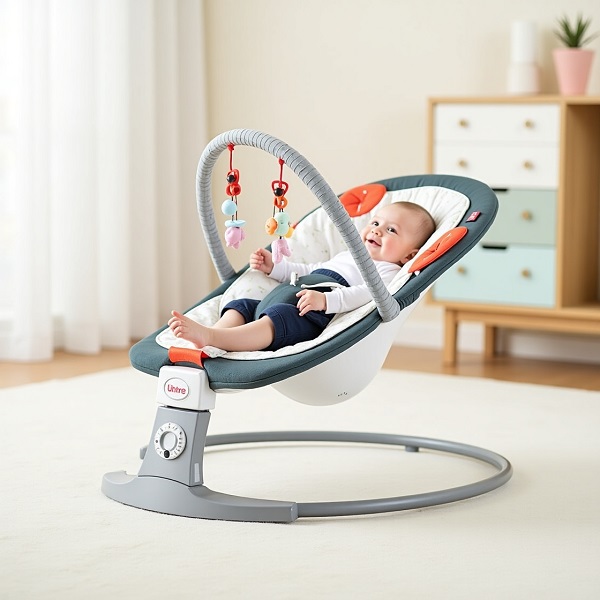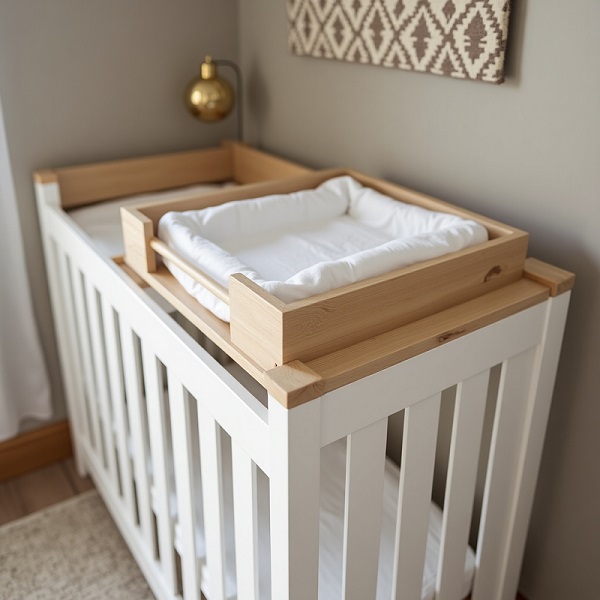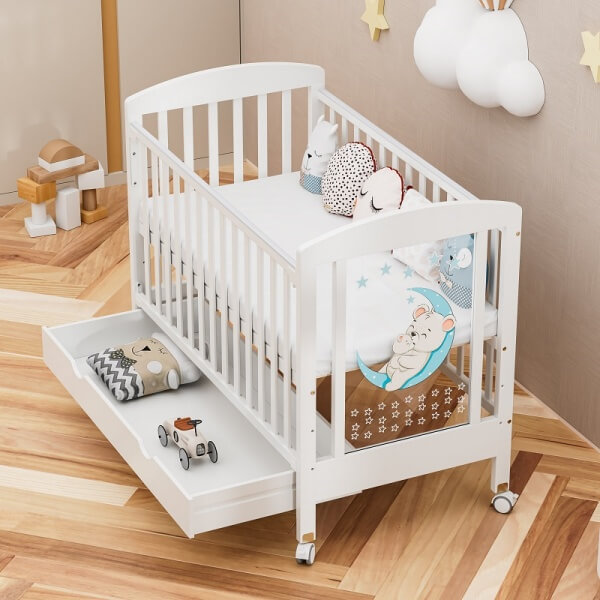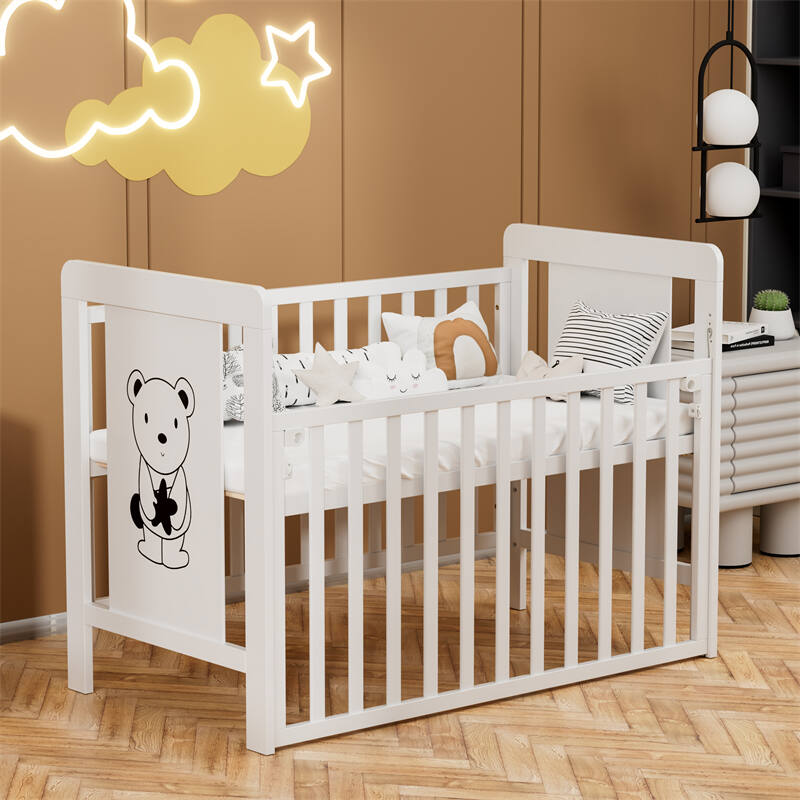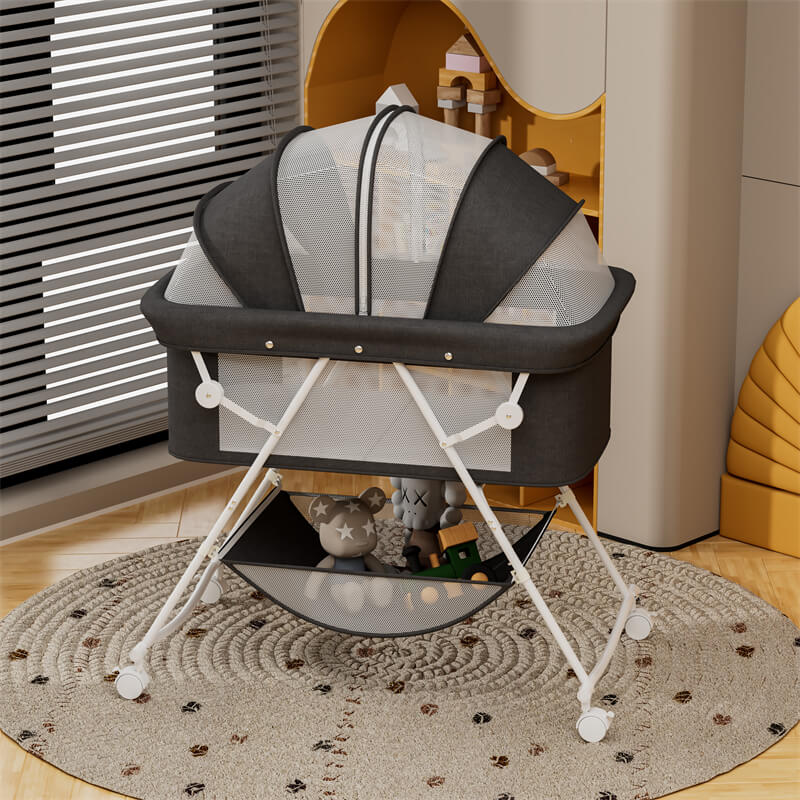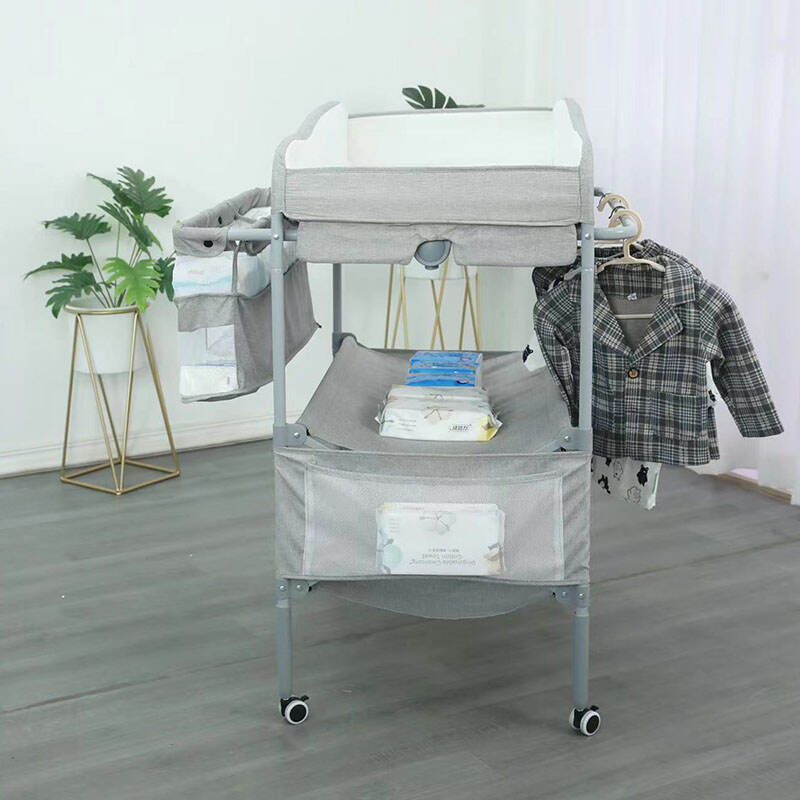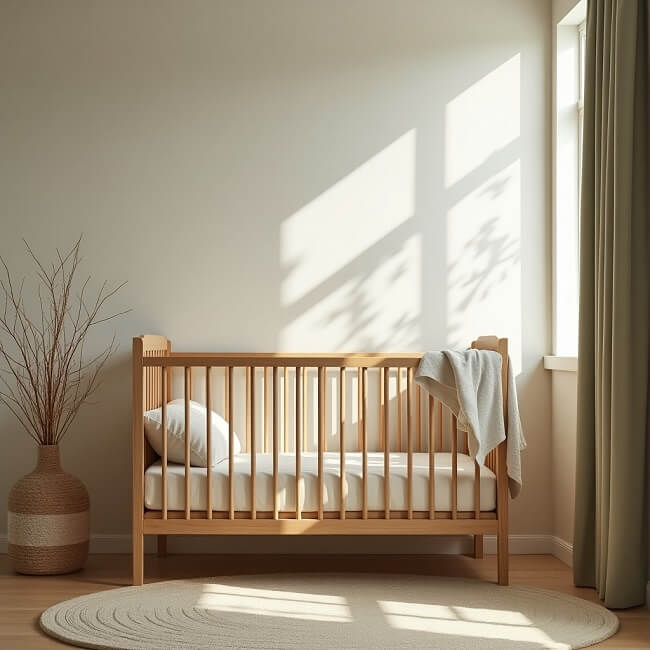In those early weeks of parenthood, time seems to both stretch and collapse. You’re sleep-deprived, just when you think you’ve got a moment to breathe—your baby starts crying the second you try to put them down. It’s in these moments that many parents begin searching, sometimes desperately, for something—anything—that can soothe their little one safely and give them just five minutes with their hands free.
Enter the baby bouncer.
What most parenting guides won’t tell you is that not all bouncers are designed with your baby’s development—or your peace of mind—in mind. Some prioritize flashy gadgets over safety, while others skimp on ergonomics. And let’s not even get started on the overwhelming choices: manual versus electric, minimalist versus sensory overload, budget-friendly versus “how much?!”
In the following sections, we’ll walk through everything you need to consider—honestly, thoroughly, and without the fluff—so you can decide if a baby bouncer deserves a place in your daily routine.
Is a Baby Bouncer Really Necessary?
Let’s settle the debate once and for all: No, you don’t technically need a baby bouncer. Humans have raised infants for millennia without battery-operated rocking seats or plush vibrating pods. But here’s the real question—does it make modern parenting significantly easier? For most families, the answer is a confident yes.
Think of a bouncer like a dishwasher. You could wash every plate by hand, but why would you when a machine saves time, energy, and sanity? Similarly, a bouncer isn’t essential for survival, but it solves real problems.
Need to cook dinner without a baby screaming in your arms? A bouncer gives them a safe, contained spot to watch you from. Desperate for a hands-free moment to reply to work emails or tend to an older sibling? A bouncer buys you that window. And for babies who fight naps, the gentle motion can be the magic trick that finally lulls them to sleep.
The slight incline offers a new perspective compared to lying flat in a bassinet, while the natural bouncing motion—triggered by their own movements—can be surprisingly calming for many infants.
That said, not every family will use one equally. If you’re a babywearing enthusiast who loves carrying your little one in a sling, or if you have a calm infant who’s content lying on a playmat, you might not need one. But for parents of colicky babies, multitasking households, or anyone who just wants an occasional break without guilt, a bouncer isn’t just helpful—it’s a mental health preserver.
Is It Safe? Key Safety Features to Check First
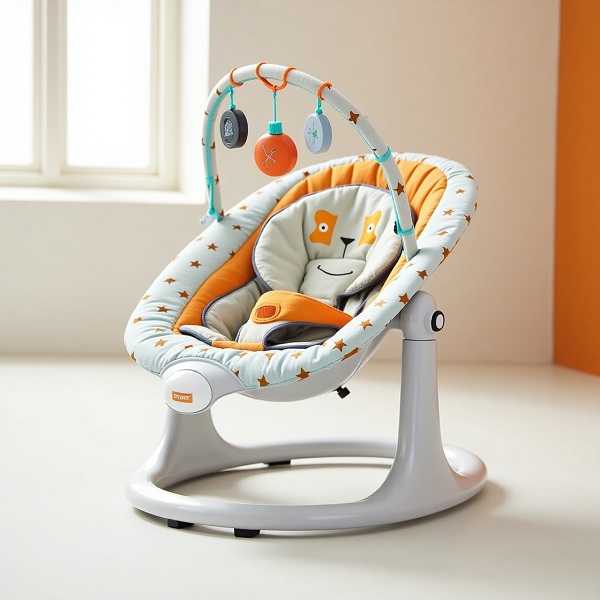
Stability: A bouncer should have a wide, weighted base that won’t tip if your baby leans or kicks enthusiastically. Those tiny feet that seem so portable? They’re a red flag if the bouncer feels wobbly even when empty. Test it yourself before trusting it with your child—press down on the seat to mimic movement and watch for any instability.
Harness Systems: A three-point buckle might look sufficient, but a five-point harness is the gold standard, especially once your baby starts squirming or trying to roll. Padding around the straps prevents chafing, but ensure it’s not so plush that it compromises the snugness of the fit. You should only be able to slip one finger between the straps and your baby’s body—anything looser defeats the purpose.
Seat Angle and Airway Safety: Newborns lack the neck strength to hold their heads up safely, so an overly reclined position can cause their chins to tuck into their chests, potentially restricting airflow. Look for a bouncer that keeps your baby’s head in a neutral position, with their airway clearly open. Some models offer adjustable recline, which is ideal for growing babies, but always check that the lowest setting is still safe for a newborn.
The Hidden Hazards of “Extra Features”: Finally, consider the extras—because sometimes, “features” are really hazards in disguise. Detachable toys are great for entertainment, but if they’re on elastic strings or small enough to choke on, they don’t belong near a baby.
How Comfortable Is It? Materials and Design Matter
A common mistake parents make is equating comfort with plushness. While a soft, pillowy seat might seem inviting, true comfort for babies comes from proper support—especially for their developing spines and hips.
Newborns lack the muscle control to adjust their position, so a bouncer that’s too deep or overly cushioned can actually cause discomfort over time. Look for firm, contoured seating that keeps your baby’s hips in a neutral position (what pediatricians call the “M position”) with knees slightly higher than the bottom.
In addition, to choosing a bouncer that truly makes your baby feel comfortable, you should pay attention to the following features.
Fabric Choices: Where Breathability Meets Practicality
That adorable fleece cover might look cozy, but it could turn into a sweaty nightmare for your baby. Breathable fabrics like cotton or mesh are ideal, especially for warm climates or babies who run hot. Removable, machine-washable covers go beyond convenience—they’re a must for handling inevitable spit-ups and diaper mishaps.
Ergonomic Design: Not Just for Office Chairs
The best bouncers mimic the natural curves of a baby’s body. A slight recline (around 45 degrees) supports the head and neck without straining, while gentle leg elevation aids digestion—a lifesaver for gassy infants. Avoid overly curved or bucket-style seats that force your baby into a “C” shape, which can strain their developing spine over time.
The Forgotten Comfort Factor: Vibration and Motion
Gentle vibrations can soothe colicky babies, but the best systems offer variable intensity—what calms one infant might overstimulate another. Look for smooth, rhythmic movement rather than jerky bouncing.
What Soothing Features Should You Look For?
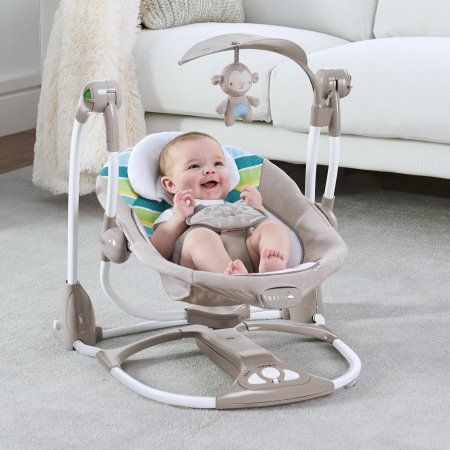
Let’s be honest—when you’re staring down at a screaming newborn at 3 AM, you’ll try anything to get just five minutes of peace. The reality? Babies don’t need fancy gadgets to calm down—they need the right kind of sensory input.
Think about what actually soothes them when they’re in your arms: It’s not electronic beeps or disco lights—it’s the rhythm of your breathing, the sound of your heartbeat, the gentle sway of your movements. The best bouncers don’t try to reinvent the wheel—they just recreate these natural comforts well enough to buy you time to chug that cold coffee.
Motion That Mimics You
What babies actually respond to is subtle, rhythmic motion—the kind that feels like being rocked in someone’s arms, not like they’re strapped to a jackhammer. Look for bouncers with smooth, pendulum-like swings rather than aggressive bouncing. Better yet, find one that lets you control the intensity manually—because what calms one baby might terrify another.
Sounds That Don’t Make You Want to Scream
Newborns are soothed more by deep, rumbling white noise—like a heartbeat or the sound of a shower—than by high-pitched lullabies like Brahms. If you must have sound features, prioritize models with adjustable volume and simple, non-electronic options.
Toys That Entertain Without Overwhelming
That jungle-themed toy bar with seventeen dangling gadgets might look impressive in the store, but to an overtired newborn, it’s just visual spam. Babies under three months see in high-contrast (black/white/red), and their focus range is about as wide as your sleep-deprived patience. The best bouncers keep it simple: one or two removable, high-contrast toys that won’t bonk them in the face when they jerk their arms.
Manual vs. Electric: Which one Suits Your Lifestyle?
A manual bouncer is about as straightforward as parenting gets—you provide the motion, whether through gentle pushes with your hand or rhythmic taps with your foot. They’re the parenting equivalent of a bicycle: reliable, uncomplicated, and entirely dependent on baby or your own energy.
Electric bouncers, on the other hand, are more like cruise control. They come with built-in motors that provide automatic rocking or vibration, often with multiple speed settings. Some even include extras like pre-programmed motions or sound machines. These models plug in or run on batteries, meaning they can keep going long after your own stamina has run out.
Now, the real question isn’t which type is objectively better—it’s which one aligns with the reality of your daily life.
If you’re the type of parent who values simplicity and doesn’t mind being hands-on, a manual bouncer might be your best bet. Manual bouncers work well in small spaces, travel easily, and don’t leave you scrambling for batteries at midnight. They’re also a solid choice if you’re wary of overusing “container” baby gear, since the need for your involvement naturally limits how long your little one stays in it.
Electric bouncers shine for parents who need a reliable way to soothe their baby when their own arms (or sanity) need a break. The key is to avoid getting sucked into unnecessary bells and whistles—look for an electric bouncer with intuitive controls and settings that actually match how babies like to be rocked.
Is It Worth the Price? Understanding Cost vs. Value
Under $30
A $30 bouncer might seem like a steal, but there’s often a hidden cost. Cheaper models frequently cut corners where it matters most—thinner padding that flattens within weeks, flimsy harness buckles that loosen over time, or lightweight frames that wobble dangerously when your baby starts kicking.
That said, not every inexpensive bouncer is a dud. Some no-frills models nail the basics: a stable frame, a secure harness, and a comfortable seat.
$60–$120
In the $60–$120 range, you’ll find bouncers that balance cost and functionality. These models typically offer better durability, more thoughtful design (like adjustable recline or machine-washable fabrics), and safer, more robust construction. Many include useful extras, like removable toy bars or vibration settings, without going overboard on gimmicks. You’re not paying for luxury, but you’re also not risking a collapse mid-bounce.
$150+
Once you cross the $150+ threshold, you’re entering “smart bouncer” territory—think app connectivity, custom motion settings, or high-end materials. The real question isn’t if these features are nice to have—it’s whether they’re truly essential.
For some parents, the answer is yes. If you have a colicky baby who only calms with very specific motion patterns, or if you’re dealing with physical limitations that make manual rocking difficult, a high-end model might be worth every penny. But for most? Those fancy features often go unused after the novelty wears off.
Conclusion
A baby bouncer might seem like a minor piece of gear in the grand scheme of parenting decisions. It doesn’t carry the weight of a baby bed or the safety standards of a car seat. It doesn’t promise sleep through the night or fix the unpredictability of colic. And yet, for many families, it becomes a quiet hero in the background—gently rocking a fussy baby during dinner prep, giving your arms a break when your body needs rest.
Of course, no product can promise peace in every moment. But when chosen with care—when safety, comfort, and practicality are thoughtfully considered—a baby bouncer can serve as more than a tool. It becomes part of your rhythm. Part of how you adapt. Part of how you show up for your baby and for yourself.
Recommended Related Articles:

